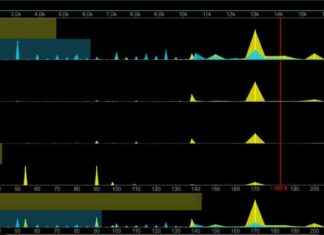This is the first time that Bitcoin has been at this level since February 17. The difficulty of the network jumped by 4.31%, bringing it to a lifetime high of 28.59 trillion. The network’s hashrate has become a little more volatile since the increase. It dropped from 217 exahash per seconds (EH/s), on April 1, to 175 EH/s today.
Since Thursday, it has been more difficult to find a Bitcoin block. The difficulty adjusts 4.31% higher
This week Bitcoin reached a new milestone. The network’s mining difficulty has never been higher. It means that it is now the most difficult time in history to find a Bitcoin (BTC). Satoshi Nakamoto invented the mining difficulty in order to ensure that blocks were only ten minutes apart, and that the difficulty adjustment algorithm (DAA), was updated every two weeks.
Mining difficulty refers to the difficulty for miners to find a block subvention, also known as a block reward. The network’s mining difficulty is vital and important. As new miners join the network, the DAA adjusts higher. This makes it more difficult for miners find block rewards.
If the reverse happens and the hashrate decreases, the DAA will drop lower, making it easier to aggregate mining participants. The 4.31% increase Thursday was the first increase in more than four weeks and only 2 DAA adjustments. Each 2016 block is adjusted by the DAA. At the time of writing 1,682 blocks are remaining until the retarget, which is expected to take place on April 13.
The next DAA change will be made on April 13, and it is expected to be a decrease. Six-month charts reveal that the hashrate has fluctuated since the March 31 increase and is currently hovering around 175.49EH/s. The hashrate’s average 90-day rate is approximately 195 EH/s, according to statistics on Saturday, April 2.
Three-day statistics have shown that F2pool is now the leading miner, with 18.91% global hashrate and 37.19 EH/s. According to three-day metrics Foundry USA is second with 18.66% global hashrate and 36.70 EH/s. F2pool discovered 76 blocks in three days, while Foundry USA found 75 blocks in the same time period.
It is now more difficult than ever for any of the mining pools to locate a block reward due to the difficulty’s lifetime peak at 28.59 trillion. There are currently 11 mining pools that have computational power and 1.99% of global hashpower, or 3.91 EH/s, dedicated to the network.
A day prior to miners discovering the 19,000,000th bitcoin at block elevation 730,034, the mining difficulty reached its lifetime high. The issuance of 1,999,193.73 has been left.






